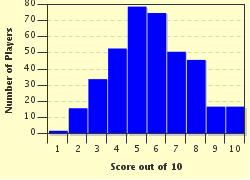Quiz Answer Key and Fun Facts
1. What familiar hymn has been adopted as the marching song of the Salvation Army?
2. English poet and clergyman John Newton wrote "Amazing Grace" in 1779. It came out of a conversion experience aboard ship where during a storm he chose to turn to the church. What was the cargo of that ship?
3. Supply the missing word in this verse:
"Come to the feast of heaven and earth!
Come to the table of ------!
God will provide for all that we need,
here at the table of ------."
4. The popular hymn "Ave Maria" is usually sung in what language?
5. George Bennard wrote "The Old Rugged Cross" in 1912. In 1915 it was sold for $500 to an Evangelistic group who popularized it through the nation during the 1920s and 1930s. What dynamic preacher was the leader of this crusade?
6. "The Little Brown Church in the Vale" is a popular hymn. The church that is sung about is real. What is the church famous for other than the hymn?
7. This hymn is often first learned by children in Sunday School:
'Jesus loves me! This I know,
For the Bible tells me so.
Little ones to Him belong;
They are weak, but He is strong"
The lyrics were first found in a 1860 novel by Anna Bartlett Warner. In the novel, what is the context of the words?
8. In the context of "Onward, Christian Soldiers", another militaristic hymn that grew out of the American Civil War was "The Battle Hymn of the Republic"
"Mine eyes have seen the glory of the coming of the Lord:
He is trampling out the vintage where the grapes of wrath are stored;
He hath loosed the fateful lightning of His terrible swift sword:
His truth is marching on.
Glory, glory, hallelujah!
Glory, glory, hallelujah!
Glory, glory, hallelujah!
His truth is marching on."
What melody was used that was also used in an abolitionist song prior to the Civil War?
9. Stuart K. Hine in 1949 translated "How Great Thou Art" into English that became second only to "Amazing Grace" as the most popular song of praise. What was the orginal language?
10. In New Orleans, among black protestants, it is often traditional to have a jazz funeral. Although the church does not favor secular music, it is a cherished tradition. What hymn is most frequently played at these occasions? (Hint: It is not "When the Saints Go Marching In")
Source: Author
Rehaberpro
This quiz was reviewed by FunTrivia editor
ertrum before going online.
Any errors found in FunTrivia content are routinely corrected through our feedback system.


